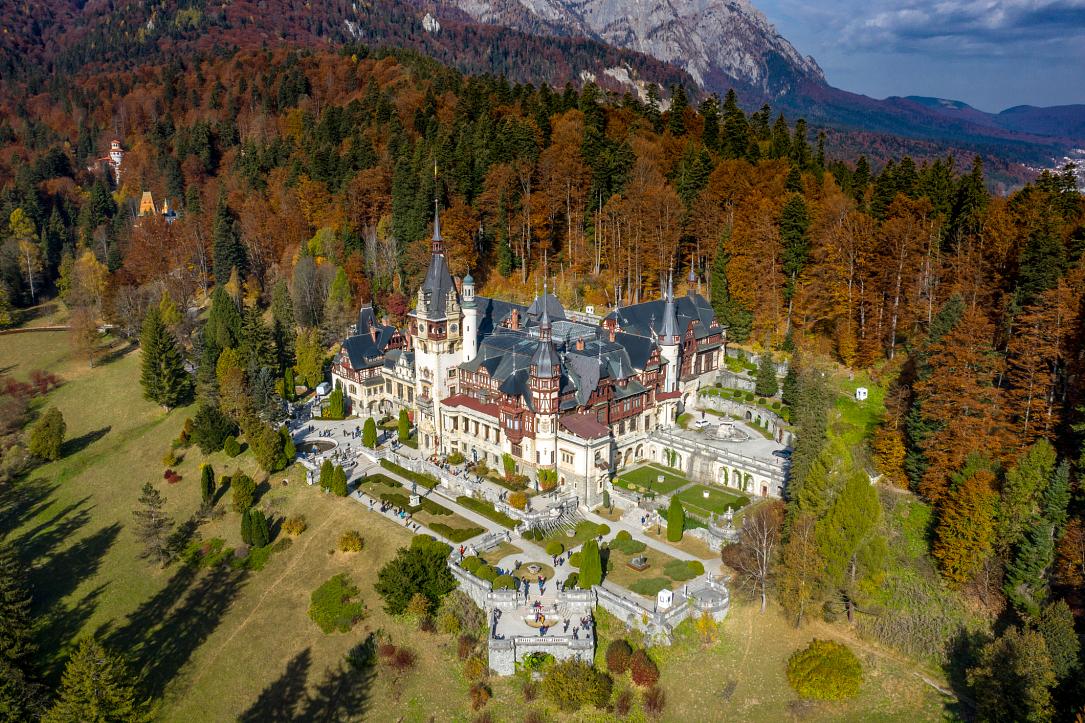Romania Photo of the Day by Dreamstime: Peleș Castle in autumn colors



One of the most beautiful castles in Europe, and the most impressive in Romania, the royal Peleș Castle sits at the foot of the Bucegi Mountains, in the town of Sinaia. (Photo source - click on the number to get to the photo 130524997 | Calin Stan | Dreamstime.com)
"I have never seen a castle like this before. Wood, marble, glass, interwoven, intertwined, fabulous, ingenious, imaginative. In between towers that scratch the sky like swords," said Henri Blowitz, the Paris correspondent of The Times, after seeing it on the Orient Express Paris to Istanbul maiden voyage in 1883, according to romaniatourism.com.
The castle covers an area of approximately 3200 square meters, housing nearly 200 beautifully designed rooms, and is surrounded by forest.
According to peles.ro, the Peleș Castle was built at the initiative of the first King of Romania, Carol I, to serve as his summer residence, invested with political, cultural, and symbolic functions. The foundation stone laying ceremony of the residence took place in a festive setting in August 1875.
In the first phase of the castle’s construction, the work was entrusted to the German architect Johannes Schultz (1879 - 1883). Schultz's two-story Swiss chalet-style building was decorated on the outside in the German Fachwerk style.
In 1890, French architect Émile André Lecomte du Noüy, a disciple of the famous French architect Violet Le Duc, took over.
Four years later, in in 1894, Czech architect Karel Liman was appointed to supervise the work. Under his supervision, the rest of the construction took place, including Queen Elisabeth’s chapel, the Concert Hall, the castle’s central tower, the Great and Small Salons, the Suite of the Crown Princes Ferdinand and Maria, the Theater Hall (equipped for film projections), the Hall of Honor, the terrace with busts of Roman emperors and the Council Hall.
Many other decorators, designers, and craftsmen were involved.
The death of King Carol I on September 27, 1914 marked the end of the vast architectural project coordinated by the sovereign.
According to rolandia.eu, King Carol insisted that Peleș Castle should be welcoming to anyone who wanted to admire it and enjoy its royal atmosphere as well as the lovely view of the mountains. Therefore, the castle is wrapped in a park and terraces, with flowerbeds, fountains, turrets, pavilions, galleries, and balconies concealed by ivy.
The interior of the castle, according to bbqboy.net, is a pure wonder with rich wood, stained glass windows, Murano crystal chandeliers, ebony and ivory sculptures, fine porcelain, and walls covered with Cordoba leather. Most of it is in the style of the German Renaissance but you can also see elements belonging to the Italian Renaissance, Gothic, German Baroque, and French Rococo styles.
Another cultural landmark worth exploring in town is Sinaia Monastery, says rolandia.eu. Founded by Prince Mihai Cantacuzino in 1695, and named after the great Sinai Monastery on Mount Sinai, the monastery served as the residence of the royal family until Peleș Castle was built, and now is home to a monastic establishment.
Sinaia, a well-known ski town, and the nearby towns of Busteni, Azuga, and Predeal are ideal for an active vacation with skiing, hiking, mountain biking, or wildlife watching.